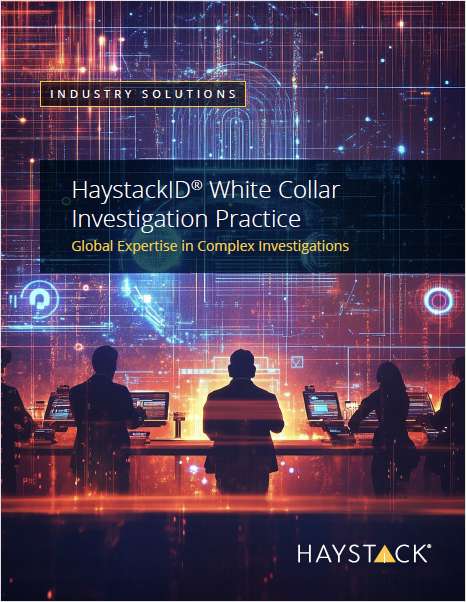 credit: shutterstock.com
credit: shutterstock.comOpen, Not Stealth, Layoffs the Way to Go With Current Generation of Associates
"It's clear that today's associates would see stealth layoffs as management failing to take responsibility, being dishonest and lacking compassion. They'd exact a heavy toll on relationships with partners and leaders, and thus on motivation and ultimately firm productivity and vitality," Hugh A. Simons writes.
July 27, 2020 at 03:58 PM
7 minute read
The original version of this story was published on The American Lawyer
It's sinking in at many firms that lawyers may likely have to be let go. This is happening as the fall review cycle beckons. It will be tempting to effectuate the layoffs as part of the reviews—so-called stealth layoffs. After all, the conventional wisdom is that stealth layoffs entail less risk than their open, publicly acknowledged, counterparts.
There is a countervailing view. It starts from the premise that the stealth vs. open layoff decision is a tradeoff between risks to external reputation (how the blogosphere perceives the firm) and to internal relationships (how associates view partners and firm leaders). At the onset of the Great Recession, the former was generally deemed to be the greater threat, as evidenced by stealth layoffs outnumbering their open counterparts by nearly 3:1 (see analysis in appendix).
The situation today is different. Current associates have expectations for how partners communicate that vary markedly from those of their decade-ago peers. They demand more openness, honesty and compassion. Stealth layoffs are highly visible internally and run counter to these expectations. They would cause profound and lasting damage to the respect associates have for partners and firm leaders, with consequent impact on motivation and loyalty.
Accordingly, the outcome of the risk assessment has flipped for many firms; open, compassionate, communication now entail lower risk to a firm's long-term health and dynamism.
External reputational risk
Dave Gordon, then head of Latham & Watkins' New York office, told associates in 2008 that "if Latham lays people off, we will not add insult to injury by calling it performance based." Latham was true to its word: in February 2009 it openly laid off 190 associates (12% of associates or 10% of all lawyers). The announcement was met with immediate outrage on the blogs; this wasn't supposed to happen at firms such as Latham. The story reverberated around the blogosphere for weeks—"to be Lathamed" became a verb on The Urban Dictionary. Latham dropped to 17th on the 2010 Vault Law 100, neighboring Jones Day. The layoff, and its begetting of a verb, was included in the 2010 Chambers and Partners overview of the firm. Bizarrely, a 2010 New York Times reviewer of "Sex and the City 2″ declared herself taken aback by Miranda quitting her law firm at a time when "a powerhouse like Latham & Watkins lays off hundreds." It was not until 2017 that Latham regained its prior standing on the Vault Law 100. The lesson taken about layoffs? Be open, become a verb.
A look at the numbers supports this takeaway. The table below shows 20 Am Law 100 firms with comparable reductions in U.S. lawyer numbers from 2008 to 2010; half had open public layoffs, half had not. The table also shows each firm's change in rank on the Vault Law 100. There's a clear trend: public layoff firms got hit harder on reputation as reflected in the Vault rankings.

Internal relationship risk
Today's associates are part of Generation Y, often referred to as millennials. As they entered the workforce, the academic research centered on how their elders viewed them. It wasn't flattering: they were self-centered, unmotivated, disrespectful and disloyal; they inclined to narcissism, wanting rapid individual advancement and frequent promotion; and they were high maintenance, needing frequent feedback and bolstering of their self-esteem and confidence.
Later research focused on the millennials themselves rather than their bosses. They are the most tech-capable cohort in history; they favor collective action and thus are strong team players; their strengths in tech and teaming make them highly productive; they seek work that has purpose; they outrank older cohorts for their ability to see others' perspectives; they are good people, being more likely to volunteer than nonmillennials; they are drawn to more compassionate work environments. Of particular relevance are what millennials find motivating in leaders. Yes, they are motivated by those who lead by example, work hard and are friendly. But also among the top 10 traits they value are: being understanding, empathy, honesty, kindness and trustworthiness.
Even in the pre-COVID froth of the legal marketplace, these associates were suspicious of firm leadership. A 2019 survey by Major, Lindsey & Africa (MLA) found that essentially half (48.3%) believed the current generation of law firm leadership had outstayed their effectiveness. They are activist: two-thirds believe they are transforming law firm policies and culture for the better. And they're more ready to walk away: two-thirds feel partnership is much less desirable than it was a generation ago. Similar skepticism is evident on law school campuses. In a 2020 MLA survey, nearly two-thirds (62%) of law school students (Zoomers) disagreed that law firm corporate social responsibility programs were authentic and valued.
It's clear that today's associates would see stealth layoffs as management failing to take responsibility, being dishonest and lacking compassion. They'd exact a heavy toll on relationships with partners and leaders, and thus on motivation and ultimately firm productivity and vitality.
Rule 1 of managing external risk in an open layoff
A review of the blogs from 2008-09 reveals that many of the heftiest reputational blows came not from the act of having a layoff but from the incompetence with which they were handled.
Some examples:
The head of the corporate department at a prominent global firm, later dubbed "Acela Bob," was overheard discussing on his cellphone his firm's layoff plans while taking the train into New York City. The details were on the blogs before he was at the office. The firm was forced to acknowledge that cuts were coming and to apologize for "the unfortunate manner" by which they became public (hardly the impression you want to give clients of how your firm handles sensitive information).
On a Wednesday morning, an Am Law 25 firm put all-day Friday blocks on adjoining conference rooms for the firm's managing partner, head of human resources and head of information technology. The holds were visible to all on the firm's online scheduler so, not surprisingly, the blogosphere knew layoffs were coming two days before they happened (and before many of the firm's partners knew). The sloppiness was roundly interpreted as the firm being uncaring and callous.
An Am Law 25 firm terminated an associate less than a week after she had a miscarriage (of which partners at the firm were aware); her departure memo was one of the 10 most-read law blog posts of the decade.
This raises an interesting question. What should be the first rule of reputational risk management? Possibilities include: not promising not to have layoffs; letting clients know immediately that, despite the layoff, you'll be able to meet their needs; reducing the reported numbers laid off by separating staff and lawyer layoffs; alerting the press in advance and providing them some context; giving associates options, perhaps by linking actions with pro bono causes. For me though, picking the winner is easy: don't do stupid stuff.
Dr. Hugh A. Simons is formerly a senior partner and executive committee member at The Boston Consulting Group and chief operating officer and policy committee member at Ropes & Gray. He now researches and writes about the business side of law firms and does some consulting for old friends. He encourages reader reactions at [email protected].

This content has been archived. It is available through our partners, LexisNexis® and Bloomberg Law.
To view this content, please continue to their sites.
Not a Lexis Subscriber?
Subscribe Now
Not a Bloomberg Law Subscriber?
Subscribe Now
NOT FOR REPRINT
© 2024 ALM Global, LLC, All Rights Reserved. Request academic re-use from www.copyright.com. All other uses, submit a request to [email protected]. For more information visit Asset & Logo Licensing.
You Might Like
View All


Shareholder Activists Poised to Pounce in 2025. Is Your Board Ready?

NLRB Bans 'Captive Audience' Meetings, Yanking Away Platform Employers Used to Combat Unionizing
Law Firms Mentioned
Trending Stories
- 1How to Support Law Firm Profitability: Train Partners Up
- 2Elon Musk Names Microsoft, Calif. AG to Amended OpenAI Suit
- 3Trump’s Plan to Purge Democracy
- 4Baltimore City Govt., After Winning Opioid Jury Trial, Preparing to Demand an Additional $11B for Abatement Costs
- 5X Joins Legal Attack on California's New Deepfakes Law
Who Got The Work
Michael G. Bongiorno, Andrew Scott Dulberg and Elizabeth E. Driscoll from Wilmer Cutler Pickering Hale and Dorr have stepped in to represent Symbotic Inc., an A.I.-enabled technology platform that focuses on increasing supply chain efficiency, and other defendants in a pending shareholder derivative lawsuit. The case, filed Oct. 2 in Massachusetts District Court by the Brown Law Firm on behalf of Stephen Austen, accuses certain officers and directors of misleading investors in regard to Symbotic's potential for margin growth by failing to disclose that the company was not equipped to timely deploy its systems or manage expenses through project delays. The case, assigned to U.S. District Judge Nathaniel M. Gorton, is 1:24-cv-12522, Austen v. Cohen et al.
Who Got The Work
Edmund Polubinski and Marie Killmond of Davis Polk & Wardwell have entered appearances for data platform software development company MongoDB and other defendants in a pending shareholder derivative lawsuit. The action, filed Oct. 7 in New York Southern District Court by the Brown Law Firm, accuses the company's directors and/or officers of falsely expressing confidence in the company’s restructuring of its sales incentive plan and downplaying the severity of decreases in its upfront commitments. The case is 1:24-cv-07594, Roy v. Ittycheria et al.
Who Got The Work
Amy O. Bruchs and Kurt F. Ellison of Michael Best & Friedrich have entered appearances for Epic Systems Corp. in a pending employment discrimination lawsuit. The suit was filed Sept. 7 in Wisconsin Western District Court by Levine Eisberner LLC and Siri & Glimstad on behalf of a project manager who claims that he was wrongfully terminated after applying for a religious exemption to the defendant's COVID-19 vaccine mandate. The case, assigned to U.S. Magistrate Judge Anita Marie Boor, is 3:24-cv-00630, Secker, Nathan v. Epic Systems Corporation.
Who Got The Work
David X. Sullivan, Thomas J. Finn and Gregory A. Hall from McCarter & English have entered appearances for Sunrun Installation Services in a pending civil rights lawsuit. The complaint was filed Sept. 4 in Connecticut District Court by attorney Robert M. Berke on behalf of former employee George Edward Steins, who was arrested and charged with employing an unregistered home improvement salesperson. The complaint alleges that had Sunrun informed the Connecticut Department of Consumer Protection that the plaintiff's employment had ended in 2017 and that he no longer held Sunrun's home improvement contractor license, he would not have been hit with charges, which were dismissed in May 2024. The case, assigned to U.S. District Judge Jeffrey A. Meyer, is 3:24-cv-01423, Steins v. Sunrun, Inc. et al.
Who Got The Work
Greenberg Traurig shareholder Joshua L. Raskin has entered an appearance for boohoo.com UK Ltd. in a pending patent infringement lawsuit. The suit, filed Sept. 3 in Texas Eastern District Court by Rozier Hardt McDonough on behalf of Alto Dynamics, asserts five patents related to an online shopping platform. The case, assigned to U.S. District Judge Rodney Gilstrap, is 2:24-cv-00719, Alto Dynamics, LLC v. boohoo.com UK Limited.
Featured Firms
Law Offices of Gary Martin Hays & Associates, P.C.
(470) 294-1674
Law Offices of Mark E. Salomone
(857) 444-6468
Smith & Hassler
(713) 739-1250








